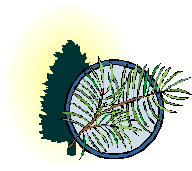

To send a message to an author, click on the author's name at the end of the article.
This Month in Ag Connection | Ag Connection - Other Issues Online
Thousands of eastern white pines and Norway spruces across the country began dying and showing damage this year, and a key suspect in the mystery is Imprelis, a weed killer many lawn companies and landscapers started using this spring.
According to Chris Starbuck, University of Missouri Extension state woody ornamentals specialist, "Every tip on this tree is affected, and to produce new growth it would have to produce new shoots from the two-year growth. It's been a surprise to everyone involved how extensive the damage appears to be. I think there will be lots of trees that have to be replaced in landscapes and it's going to cost somebody some money."
Professionals started using Imprelis this spring for the first time. Many progressive lawn care companies gravitated toward it because it is highly effective at controlling common yard pests like dandelion, clover and ground ivy. It also boasted a low use rate – only four ounces per acre – while being less toxic to mammals. Consumers cannot buy the product themselves, so it is only a problem in lawns treated by professionals.

DuPont alerted professionals of the problem after symptoms began surfacing toward the end of May. It advised them not to use the herbicide near white pine or Norway spruce. While conifers show the most extreme damage, Imprelis has apparently caused damage symptoms on other trees and shrubs. That burn manifests in twisted branch tips, distorted growth, cupping of leaves, and the browning of leaves and needles in extreme cases.
Damage to plants ranges widely even within a single landscape, with one pine tree showing few symptoms and another 10 feet away showing browned needles and twisted branch tips. Older conifers are hit particularly hard because their root systems spread shallowly out more than 50 feet into most lawns. Since Imprelis works not only by leaf and stem contact but also through root uptake, the shallow roots seem to make evergreens more vulnerable.
No one really knows why some plants are hit harder than others, even within a given species. Some theorize that other environmental factors such as irregular rain patterns or high heat are causing symptoms to show this year.
Since Imprelis lingers in the soil for more than 50 days, some think the situation will get worse before it improves. DuPont asks professionals and homeowners to help track symptoms by reporting damage to their lawn care providers and leaving damaged trees standing in their landscapes for a full year. Do not mulch dead trees or send them to your cities landfill because herbicide residue in the tissue may cause the mulch to inhibit plant growth. Find out more about Imprelis injury symptoms from MU Extension at http://extension.missouri.edu/p/AGW1016.
Source: Christopher Starbuck, MU Extension State Woody Ornamentals Specialist
This Month in Ag Connection | Ag Connection - Other Issues Online
Pastures and crops are withering due to the current drought we're experiencing. Many producers are considering chopping corn for silage. Silage from drought-stressed corn is excellent livestock feed, although several management issues must be considered. Pay attention to the details of proper silage making; proper particle size, proper moisture content, rapid silo filling, adequate packing, etc. Nitrates can be an issue, although ensiling reduces nitrates 30 to 50 percent.

Once the ensiling process has completed and the silo is opened for feeding, other management issues need attention. First, I would recommend a nutrient and nitrate analysis of the ensiled material. Then proper diets can be formulated based on the energy, protein and nitrate content of the silage. When silage feeding begins, it is recommended, during hot weather, that at least 6 inches of silage be removed from the face of the pile daily in order to prevent silage deterioration due to oxygen exposure.
Book values for energy, represented by Total Digestible Nutrients (TDN), and crude protein (CP) for several feeds are listed on a dry matter basis below.
| Feedstuff | % TDN | % CP |
|---|---|---|
| Fescue Hay, mature | 50 | 8.4 |
| Corn Silage, normal | 70 | 8.0 |
| Corn Silage, drought damaged | 61 | 11.1 |
Note that drought-stressed corn silage has over 20% more energy than mature fescue hay and nearly 40% more protein than normal corn silage.
There are several ways drought-stressed silage can be incorporated into cattle feeding programs. A full feed (approximately 90 pounds of as-fed silage) provides excess energy to spring-calving cows of moderate body condition in late lactation. This level of feeding will result in cows gaining about 1 pound per day, but will meet the protein, calcium and phosphorus requirements of the animal.
Spring-calving cows of moderate body condition in late lactation will have their energy requirements met by feeding approximately 70 pounds of as-fed drought silage (or 24 pounds of silage on a dry matter basis). This is well below the expected intake of the animal and the protein and phosphorus requirements of the animal are not met. Other feedstuffs, such as hay or pasture, can be used to make up the difference in expected intake. Protein and minerals can be supplemented as necessary.
Weaning the calf has a dramatic impact on the nutrient requirements of the cow. For example, a dry spring-calving cow in moderate body condition will have her energy requirements met by feeding approximately 50 pounds of as-fed drought silage, compared to 70 pounds of drought silage needed for the lactating animal. Additional protein and phosphorus are needed, but 50 pounds as-fed silage is only about 60% of what we would expect her to eat per day. Limited nutrients can easily be supplemented with additional feedstuffs.
Other feeding programs to consider during this drought include combinations of silage, hay and supplement or limit feeding high concentrate diets. Supplements or high concentrate diets can be made using combinations of corn grain and grain by-product feeds. If hay is in short supply, ammoniated wheat straw is a viable feedstuff. When total feed supplies are low, however, weaning the calves is probably the simplest and easiest way to reduce total forage needs for the cow herd.
Pay attention to the details of alternative feeding programs during this drought. There are many management strategies for coping with the situation, but care must be taken to ensure the animals' nutrient requirements are being met. Contact your local livestock specialist for more information.
Source: Gene Schmitz, MU Extension Livestock Specialist
This Month in Ag Connection | Ag Connection - Other Issues Online
Now is the time to take advantage of the wild black walnuts as trees are shedding their nuts rapidly. Since there are over 97 million wild black trees in Missouri, there is likely one near you!
While commercial producers typically harvest with a mechanical tree shaker, homeowners can enjoy the nuts picked from the tree or from the ground after falling from the tree. The highest quality nuts are those still attached to the tree. To determine the right time to harvest nuts from the tree, a "dent test" can be used. This is performed by holding a walnut and depressing the husk with the thumb. When more than 75% of the black walnut husks dent, the walnut tree is ready for harvest. Research at the University of Missouri has shown that husk softening is associated with walnut maturity. An instrument, such as the durometer, which measures husk hardness, is another way to determine the harvest date for black walnuts. However, if you are too late to harvest the nuts from the tree, it is important to collect the nuts soon after they drop to enjoy them before squirrels find them.

Another reason to harvest them when the hulls are softening and green is that the kernels will be mature and flavorful, but not dark in color or taste rancid. With a two week delay in husk removal, kernels turn black and the less desirable flavors will have developed. Not only is it important to collect the walnuts quickly, but it is also important to remove the husks as soon as possible after harvest. For large scale production, mechanical hulling (husk removal) is used, but homeowners often use other creative methods such as running over the nuts with a vehicle or using grinders or other abrasive means to remove the husks.
Once husks are removed, walnuts are hung in bags and dried for about five weeks. Onion bags or other loose-woven bags that permit air movement are ideal. After the nuts have dried, either crack them immediately or store them at 32 to 40 ºF. Before cracking, inspect the shells to make sure that there are no fissures or cracks in the shell. Walnuts with cracked shells are often infected with microorganisms and should be discarded. Bright yellow, blue streaked, or black kernels should not be consumed. For black walnuts with sound shells, heavy duty crackers are needed to break open the thick shells. An example of such a nut cracker can be found at: http://www.nutgrowing.org/. After cracking, walnuts for immediate use can be placed in an airtight container in the refrigerator or they can be stored in the freezer until next year's harvest.
To enjoy black walnuts year round, try some of the recipes at: http://www.black-walnuts.com/.
Source: Michele Warmund, MU Professor of Horticulture
This Month in Ag Connection | Ag Connection - Other Issues Online

Osage Co. – Sept 8 &9
Contact: Osage SWCD – (573) 897-3797 Ext. 3
Cole & Moniteau Co.— Sept. 21 & 22
Contact: Cole SWCD— (573) 893 -5188 Ext. 3
Benton Co.– Oct. 19 & 20
Contact: Benton SWCD— (660) 547-2351 Ext. 3
This Month in Ag Connection | Ag Connection - Other Issues Online

It's not too soon to start thinking about next year's garden. A good garden starts with good soil. Fall is an ideal time to work on garden soil improvement.
In both new and established gardens, one of the best ways to improve soil structure and productivity is to add organic matter during fall plowing. This practice loosens clay soils typical of many parts of Missouri. Ideal garden soils contain about 5 percent organic matter, but amounts as low as 1 to 2 percent are typical in the state.
Inexpensive sources of organic matter include compost, well-rotted manure and leaf mold. Peat moss is excellent but can be expensive. Adding up to 4 inches of organic matter on a yearly basis to garden soil is a best-management practice. Thorough incorporation to a depth of 6 inches gives maximum results.
If soil tests indicate the need, fall also is an ideal time to add lime or phosphorous, which react slowly and will not leach out of the soil during winter.
Planting cover crops such as wheat, rye or vetch is another way to build good garden soil. Cover crops decompose into the soil in the early spring before the planting season arrives.
Source: David Trinklein, MU Associate Professor of Horticulture
This Month in Ag Connection | Ag Connection - Other Issues Online
Publishing Information
Ag Connection is published monthly for Northeast and Central areas of Missouri producers and is supported by the University of Missouri Extension, the Missouri Agricultural Experiment Station, and the MU College of Agriculture, Food and Natural Resources. Managing Editor: Mary Sobba.